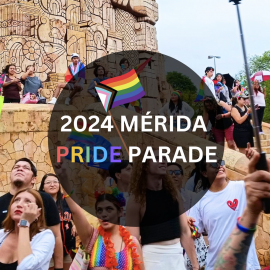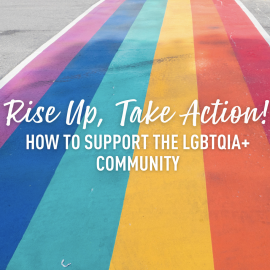Did You Know?
10 African American “Firsts” at Carnegie Hall
Carnegie Hall is one of the most prestigious venues in the world for classical and popular music. Did you know that it also has a history of inclusivity? Even before other prominent stages were open to African American performers and activists, Carnegie Hall was a stage that welcomed them.
Here are 10 important African American performers and activists who made history at Carnegie Hall:
- The Very First – W.T Talbert – It was long believed that Sissieretta Jones was the first African American performer to appear at Carnegie Hall, but we’ve recently learned of another! In April and May of 1892, two months before Sissieretta Jones’ performance, pianist W.T. Talbert gave two recitals in the Chamber Music Hall (today’s Weill Recital Hall). While little is known about Talbert, we believe he may have been Thad Talbert, brother-in-law to Mary Burnett Talbert, a founder of the NAACP. Talbert was the headliner, and he was joined by a band of other African American performers.
- Sissieretta Jones: Though perhaps not the first, this performance still has a place in history. In June of 1892, at the end of Carnegie Hall’s first full concert season, soprano Sissieretta Jones performed there on a concert presented by the black social organization The Sons of New York. Although this performance took place in the 1200-seat recital hall on the hall’s lower level (today known as Zankel Hall), Jones returned eight months later to sing in the main auditorium on a benefit for the World’s Fair Colored Opera Company.
- Activists Booker T. Washington, W.E.B DuBois, and Marcus Garvey: Black social causes frequently found a platform at Carnegie Hall as well. Booker T. Washington made the first of his 15 appearances there in 1896, and in 1904, Washington shared the stage with W.E.B. Du Bois on a three-day conference of African American leaders. The more controversial Marcus Garvey addressed Carnegie Hall audiences four times.
- First in Jazz: Popular lore often maintains that Benny Goodman gave the first jazz concert at Carnegie Hall in 1938, but that distinction belongs to James Reese Europe and his Clef Club Orchestra, comprised of members of the first black musicians’ union, who performed a “Concert of Negro Music” in 1912. Of this ragtime concert, one newspaper noted that the audience “was large and thoroughly well mixed, but united in its applause.”
- Marian Anderson: In 1939, Marian Anderson was famously barred from appearing in Washington’s Constitution Hall, which had a policy put in place by the Daughters of the American Revolution to restrict the hall to only white performers. But over ten years previously, she had made her Carnegie Hall recital debut, on December 30, 1928.
- Benny Goodman and His Orchestra/Quartet: The importance of a racially mixed ensemble on such a highly visible public stage cannot be understated. “It was the first time black and white ever played together,” as vibraphonist Lionel Hampton often asserted of Goodman’s quartet, and although nightclub and ballroom audiences had seen Hampton and pianist Teddy Wilson in the group since 1936, it was a first for a prominent concert stage.
- Duke Ellington and His Orchestra: Already popular at the time, Ellington kicked off a five-year stretch of annual concerts in 1943. This period of extraordinary creativity for him as a composer included debuting works, he wrote especially for the Carnegie performances like Black, Brown, and Beige, and New World A-Comin’, and many more!
These early performances were only the beginning. Representatives of nearly every facet of black culture have appeared regularly at Carnegie Hall, and here are some more notables:
- W.C Handy’s Orchestra and Jubilee Singers: “The Father of the Blues,” brought his band to Carnegie Hall in 1928, with Fats Waller.
- “From Spirituals to Swing.”: True to its title, the December 23, 1938 concert covered every facet of the black musical experience.
- Dizzy Gillespie and His Orchestra: September 1947, featuring vocalist Ella Fitzgerald!
- Top Ten Revue: October 1955, featuring vocalists Bo Diddley, Etta James, and Big Joe Turner.
- Ike and Tina Turner: April 1971, featuring Fats Domino.
- Stevie Wonder: February 1973.
- Aretha Franklin: December 1975
- Wyclef Jean Foundation Benefit: January 2001, featuring Mary J. Blige, Destiny’s Child, Whitney Houston, and Wyclef Jean.
- Jay Z: February 2012
- Tituss Burgess: February 2020
As the cornerstone for the building that would become Carnegie Hall was laid, Andrew Carnegie himself said, “It is probable that this hall will intertwine itself with the history of our country.” Over the years, Carnegie Hall has certainly fulfilled this founding wish by intertwining itself with the history of our country, regardless of race!
Related Articles

The 2024 WorldStrides Student Photo & Video Contest Gallery
Carnegie Hall is one of the most prestigious venues in the world for classical and popular music. Did you know that it also has a history of inclusivity? Even before other prominent stages were open t...

Girl Scouts: Costa Rica Tour
Carnegie Hall is one of the most prestigious venues in the world for classical and popular music. Did you know that it also has a history of inclusivity? Even before other prominent stages were open t...

2024 Mérida Pride Parade
Carnegie Hall is one of the most prestigious venues in the world for classical and popular music. Did you know that it also has a history of inclusivity? Even before other prominent stages were open t...

Rise Up, Take Action: How to Support the LGBTQIA+ Community
Carnegie Hall is one of the most prestigious venues in the world for classical and popular music. Did you know that it also has a history of inclusivity? Even before other prominent stages were open t...


